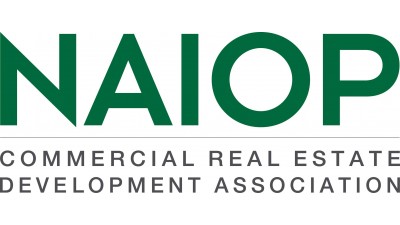Hiring Diverse Candidates Isn’t Enough. CRE’s Next Frontier Is Inclusion

Many commercial real estate companies are making changes to their recruiting strategies to attract a more diverse talent pool. But simply adding these new hires to the staff isn’t enough to foster lasting change.
“Unless they feel at home, they’re never going to stay,” CBRE Senior Director Holly Warnick said. “That’s why inclusion is so important.”
Inclusion initiatives work to foster a community in which employees of different races, genders, socioeconomic backgrounds and sexual orientations all feel heard and valued. Companies that overlook diversity and inclusion could be missing out on a serious boost to productivity and even revenue. A McKinsey study from 2018 found a strong correlation between diverse leadership teams and profitability.
Creating a truly inclusive environment can be a painstaking process. But now, Warnick said, there are companies within CRE that others can look to as examples of how to make the best first strides.
At CBRE, Warnick manages Microsoft’s massive North American office and data center portfolio, but she also serves on the national board for CBRE’s resource group for LGBTQ employees and allies. She is active in three other employee resource groups, which serve as forums for employees to share experiences, knowledge and support.
Beyond the groups, CBRE has been investing in programs for advancing women, as well as NEXUS, a summer immersion program for high school juniors and seniors from backgrounds that are underrepresented in commercial real estate.
CBRE has also worked to make sure that its panelists at industry events represent diverse backgrounds. Warnick herself will be a panelist at NAIOP’s upcoming CRE.Converge conference in Los Angeles, where she will speak about the competitive advantages of building a more diverse and inclusive workplace at the closing general session.

Moderating the panel at Converge will be Jerry Guerrero, global director of diversity and inclusion at Hines. Guerrero has spearheaded the growth of OneHines, his company’s overarching diversity and inclusion initiative. The program has included the creation of the OneHines Women’s Network, Local Ambassadors and the Listening Tour, which facilitated focus group discussions at Hines offices across 11 cities.
Guerrero led each of the Listening Tour sessions, reaching hundreds of employees. In every session, he said, the business case for inclusion came through loud and clear.
“Team members who feel included are more willing to contribute ideas without hesitation, and innovation thrives,” Guerrero said. “Inclusive teams have lower turnover, more trust and increased productivity.”
In addition to myriad studies that demonstrate that diverse and inclusive teams are more productive, Guerrero said he is gathering a growing body of anecdotal evidence: an email folder full of positive feedback and personal stories sent to him over the course of his time at Hines.
Warnick’s favorite story about the triumph of inclusion efforts is her own. She described the reaction among her close-knit group of co-workers when she chose to come out.
“The support I got at CBRE was nothing short of extraordinary,” Warnick said. “My allies embraced me and held me up for those days. I felt so lucky that I didn’t have to pretend to be something I wasn’t.”

Companies that make a home for employees with diverse backgrounds are also better prepared to face a historically tight labor market. Both Warnick and Guerrero pointed to their companies’ ambassadorship programs, which are working to recruit candidates from nontraditional backgrounds, attending job fairs and universities where real estate companies may not have had a presence a few years ago.
Industry organizations are joining in as well. In the last several years, NAIOP has launched a variety of programs and scholarships as part of a concerted initiative to advance diversity in the industry. The goal, NAIOP President and CEO Thomas J. Bisacquino said, is to build a continuous pipeline of diverse talent that supports working professionals from underrepresented groups, as well as students pursuing degrees that will lead to careers in commercial real estate.
Warnick and Guerrero agreed that the commercial real estate industry has a long way to go. Guerrero said that diversity and inclusion efforts are still in the emergent phase across the industry, but added that CRE companies have an opportunity to make a name for themselves as accepting, inclusive workplaces just by following in the footsteps of innovators.
In November, NAIOP will continue its partnership with SITE Centers, Brixmor, Hines and several other real estate companies at the annual Commercial Real Estate Diversity and Inclusion Roundtable. The roundtable is a forum for commercial real estate professionals to discuss effective diversity and inclusion practices and walk away with actionable strategies for their own companies.
“It’s not a sprint, it’s a marathon,” Warnick said. “The industry as a whole is responding well, and we are making the right moves to change things, but it doesn’t happen overnight.”
She added that the first step toward building a more inclusive organization is to simply be honest about the current state of diversity and inclusion. Companies that can’t candidly appraise their shortcomings may be doomed to repeat them.
“You have to be transparent about where you are,” Warnick said. “Talk about why diverse teams are more productive and what you have to do to get there. Letting people tell their own stories is critical to changing the whole landscape.”
Guerrero and Warnick will take part in a panel on the competitive advantages to creating a more inclusive workplace at NAIOP’s CRE.Converge conference in Los Angeles, Oct. 14-16.
This feature was produced in collaboration between Bisnow Branded Content and NAIOP. Bisnow news staff was not involved in the production of this content.

